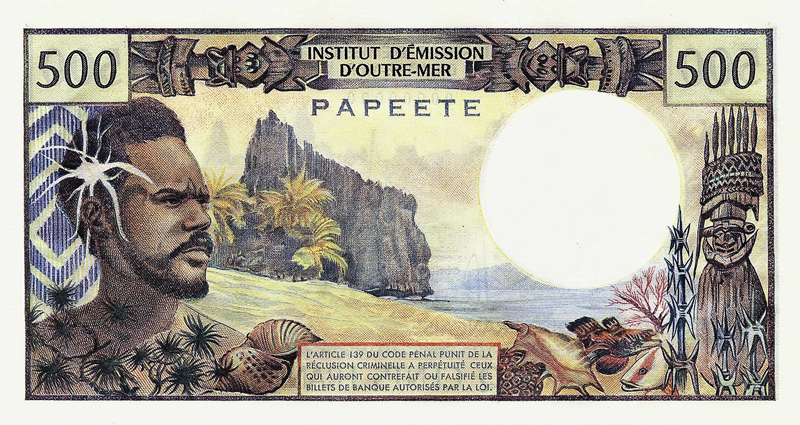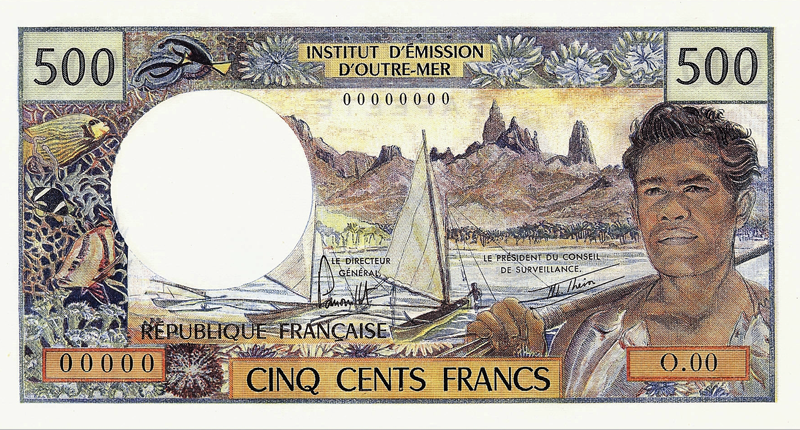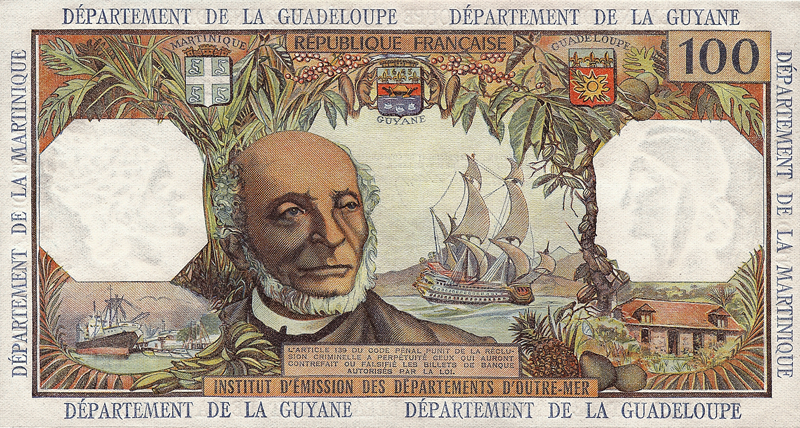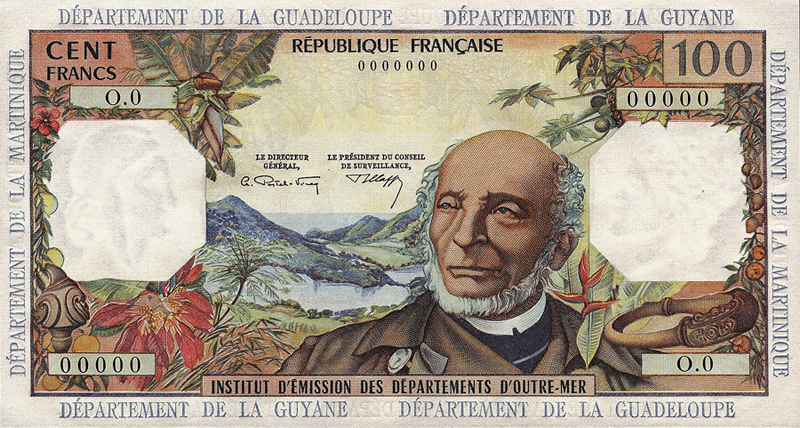Following in the tradition of French banknotes (designed by an artist and presented as a painting), banknotes from the French overseas departments and territories illustrate key events or famous people in the history of the department or territory concerned, or show the local landscape or scenes from local economic life. They are most distinguishable from their mainland counterparts in general by the use of brighter colours and, of course, the subjects of the engravings.
Set up in 1959, the Institut d’Émission des Départements d’Outre-mer (IEDOM) was initially responsible for the issue of banknotes specifically for the French departments of Martinique, Guadeloupe, French Guiana, Réunion and Saint Pierre-et-Miquelon. Since the currency used in mainland France (the franc and, since 2002, the euro) has been the only legal tender in these departments since the 1970s, IEDOM no longer issues its own banknotes. It now works in three areas on behalf of the Banque de France: it has a central bank role (including the issue and maintenance of currency, in this case euro banknotes, the rating of companies in view of the mobilisation of credit claims as collateral in Eurosystem’s refinancing operations, oversight of payment systems and means of payment, and acting as a local relay for the French authorities responsible for the supervision of the banking and financial system); public service tasks (in particular, the issuance of euro-denominated coins, the management of Public Treasury accounts, and acting as the secretariat for household debt commissions and as the observatory of banking fees); and, finally, general interest missions (acting as an economic and financial observatory, a credit mediator for businesses and an information provider to the banking community).
The 100-franc banknote

The 100-franc banknote shown here was issued by IEDOM and put into circulation in 1966 in the three departments of Guadeloupe, French Guiana and Martinique. It is an example of a banknote illustrating a key event in overseas history: the abolition of slavery in 1848. It depicts a bust of Victor Schoelcher, who initiated the abolition of slavery in French territories.
Set up in 1967, the Institut d’Émission d’Outre-mer (IEOM) implements monetary policy in conjunction with the Banque de France in the French overseas territories (New Caledonia, French Polynesia and Wallis and Futuna) and defines the instruments necessary for that purpose. It issues its own banknotes and coins, denominated in the legal tender of these territories, the CFP franc (from the French acronym for Pacific Financial Community) which has a fixed exchange rate against the euro. Its other tasks are comparable to those exercised by the IEDOM in its particular regions, but also include preparation of the balance of payments for New Caledonia and French Polynesia.
The 500-franc banknote

The 500-franc banknote shown here was issued by the IEOM in 1969 and shows another facet of overseas banknotes – the representation of various aspects of local life: on the front is the bust of a Polynesian fisherman with a landscape of the Marquesas Islands in the background and, on the back, the head of a young man from Ouvéa in the Loyalty Islands against the backdrop of the Hienghène cliffs in New Caledonia.
To find out more
Circulation and maintenance of the IEOM banknotes
Published on 13 March 2012. Updated on 13 June 2024
Explore also...
-
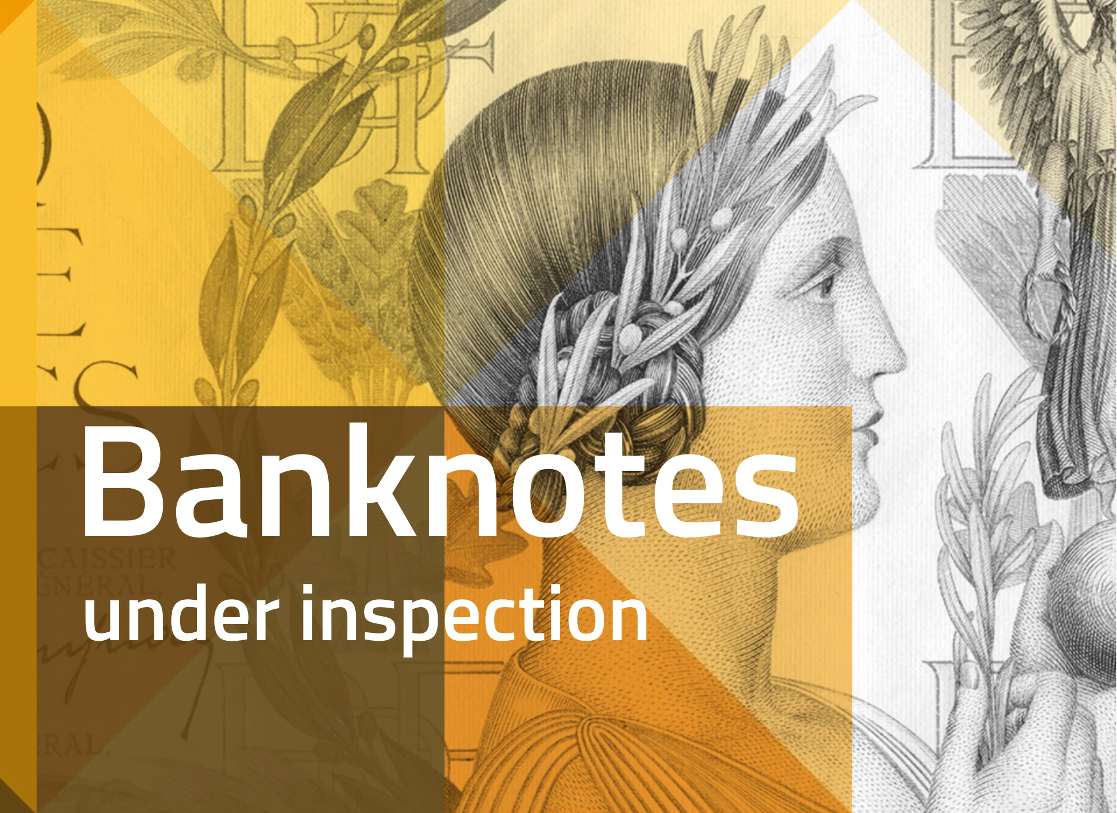
The City, Resources, The keys of the economy, Treasures, Banknotes and coins
Banknotes under inspection
-

The City, Resources, The keys of the economy, Treasures, Banknotes and coins
Coins under inspection
-

The City, Resources, The keys of the economy, Treasures, Banknotes and coins
Banknotes under inspection
-

The City, Resources, The keys of the economy, Treasures, Banknotes and coins
Coins under inspection
-

The keys of the economy, Players, Businesses
A game (in French) for learning about economics

